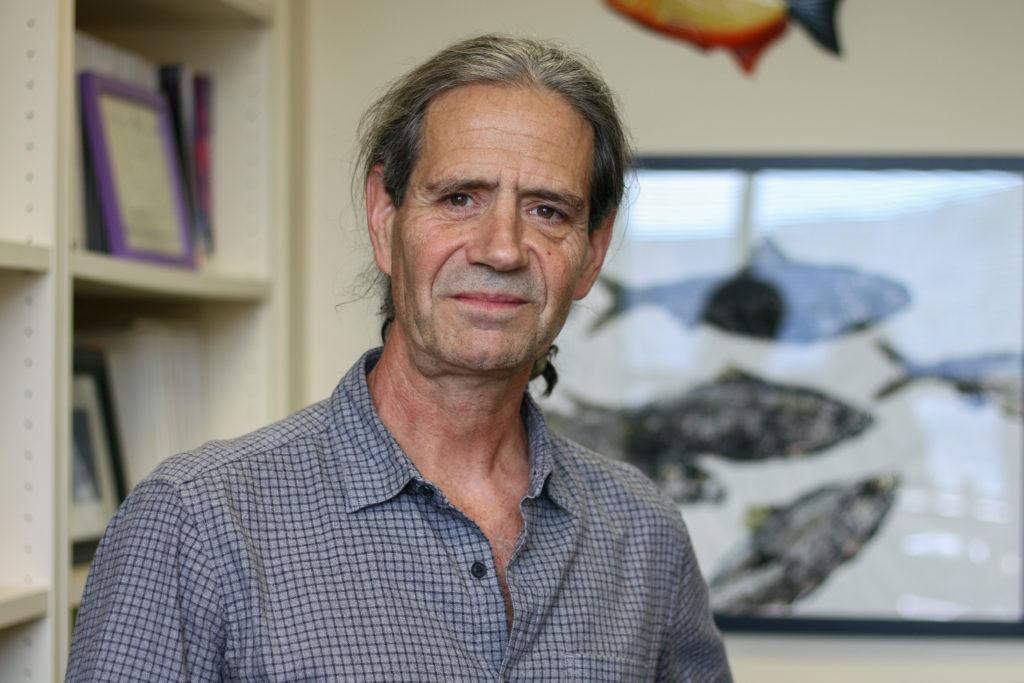Updated: April 12, 2019 at 2:34 p.m.
More than half of faculty and staff responded to the University’s survey on employee culture, marking the end of the first phase of an effort to overhaul the culture of GW.
University President Thomas LeBlanc announced last month that the University would partner with the Disney Institute to issue the first institutional culture survey in recent memory, which he said would allow officials to make decisions about policies and procedures backed by data. While officials said the survey had a more than 50 percent response rate and received mostly favorable reviews, 15 faculty and employees said in interviews that the questions were not precise enough to gauge their experiences.
University spokeswoman Lindsay Hamilton said the response to the survey has been “overwhelmingly positive as members of our community understand the motivation for the project is to assess and ultimately improve our institutional culture.” She said officials will use the results of the survey to measure progress as officials make changes to improve culture.
Officials said last month that the Disney Institute would use the findings of the surveys to form focus groups and conduct interviews to obtain more in-depth data about the culture. The University will then decide whether to rehire the Disney Institute, hire an external group or use GW employees to design an action plan to institute change.
Changing the “transactional” culture at GW has been one of LeBlanc’s priorities since he first arrived on campus last year.
“The findings from the survey will inform the development of a data-driven plan to improve the university’s culture,” Hamilton said. “We are thankful to everyone who responded to the survey and pleased that more than half of our faculty and staff participated.”
Hamilton declined to specify how many faculty responded to the survey.
The survey featured 18 questions with drop-down menu responses and two open-ended questions that asked about what is going well and what could be improved about employee engagement, leadership and the student and family experience. In the drop-down questions, which asked about topics ranging from whether employees understand their roles to if they comprehend the University’s long-term vision, respondents could choose from the “agree,” “disagree” or “neutral” options, according to screenshots of the survey obtained by The Hatchet.
Sylvia-Marotta Walters, the chair of the Faculty Senate executive committee and the leadership team for the culture assessment, said the survey is the first step required to make tangible change. She said a 30 percent response rate is typical for most surveys, and she is “gratified” that employees know how important the results of the survey are.
“It will be a long process, but it will be worth it, and it will be something that all of us can appreciate,” she said.
Marie Price, a professor of geography and the other faculty member on the leadership team, declined to comment.
But in interviews, 15 faculty members said the survey’s questions were too vague to answer properly. They said more open-ended questions would have provided a better forum to provide detailed accounts of their experiences while working for GW.
The steering committee of the GW Faculty Association, an independent group of faculty who often challenge the administration’s agenda, published a letter Oct. 15 calling questions on the survey “generic.” Pull-down menus asking faculty to rate their level of agreement and disagreement to statements like, “I get the information I need at the University when I need it,” were hard to answer because it wasn’t clear what they were asking, the letter states.
The letter from the Faculty Association added that the $300,000 spent on the survey and consulting work with the Disney Institute could have been used to benefit other areas of the University, like the salaries of part-time faculty who receive “Mickey Mouse” wages.
Hamilton, the University spokeswoman, declined to say how GW responded to the Faculty Association claims that the questions were vague, the Disney assessment was too expensive and the assessment used a “top-down” approach.
Guillermo Orti, a professor of biology who is on the steering committee of the Faculty Association, said the survey is an example of GW’s top-down leadership culture because the survey was created without any input from staff or faculty.
He said the questions, like those asking about the clarity of the University’s values, are so vague that faculty can interpret them in different ways, which could result in bad data.
“You can use it to manipulate the outcome of what you think you want to see or what you want people to think they see,” he said. “When the data is ambiguous, you can craft whatever information you want out of this data.”
Katrin Schultheiss, the chair of the history department, said the survey could have been more useful if questions varied for different types of employees instead of asking the same questions to faculty, staff and administrators. Some questions asking whether common spaces were appealing were applicable across job descriptions, she said, but there were some that did not apply to her.
“That just suggested that they didn’t really know how a university is organized,” she said.
Shira Robinson, an associate professor of history and international relations, said in the open-ended questions, she wrote that the survey was formatted for a corporation rather than a university.
“I’m sure his efforts were sincere in wanting to survey the climate on campus, but I found the actual survey to be nonsensical,” she said.
Creighton King, Emily Maise, Siena Rush and Amy Liu contributed reporting.
Editor’s note:
This post was updated to remove a quote and paraphrase that was incorrectly attributed. We regret this error.




